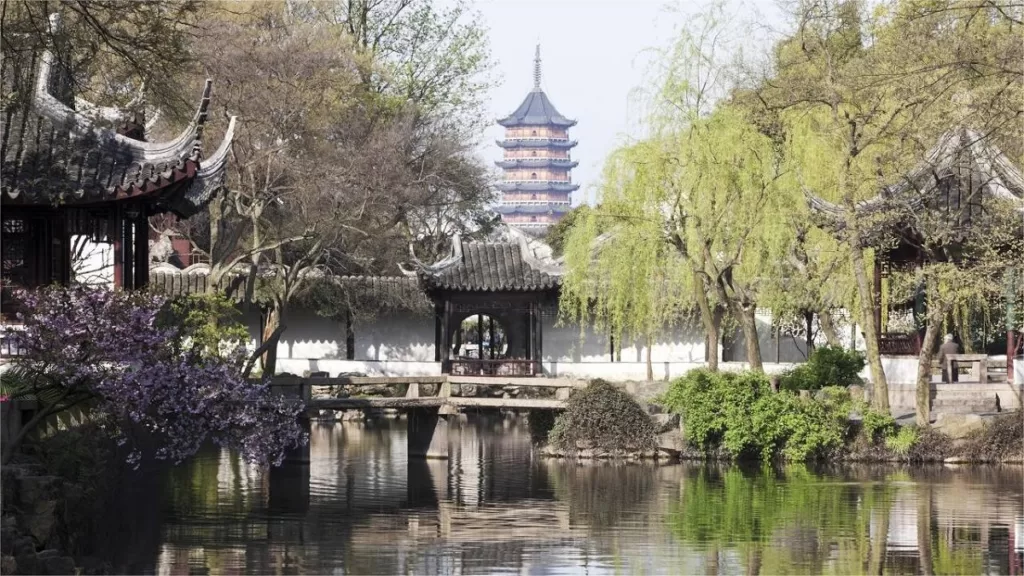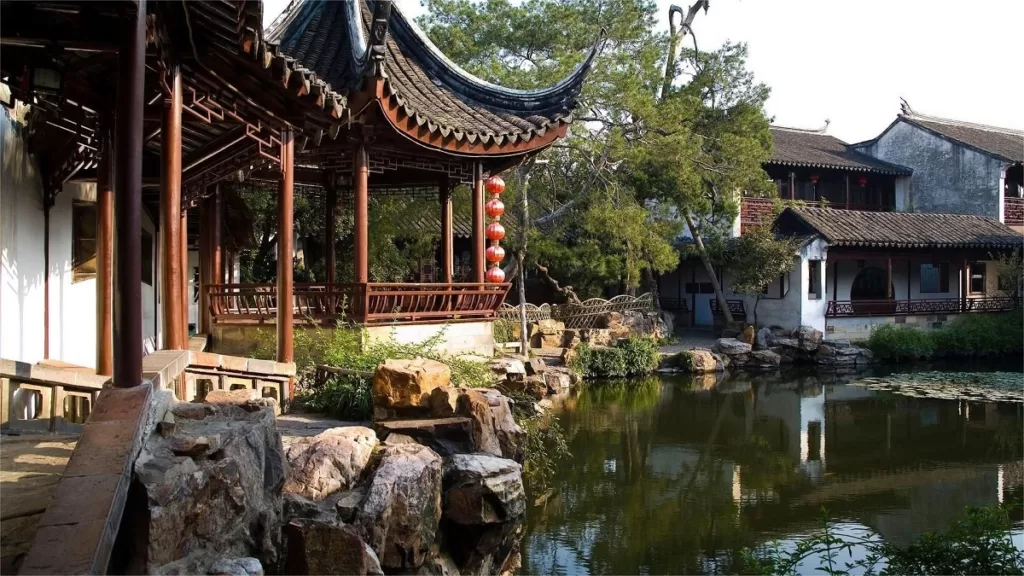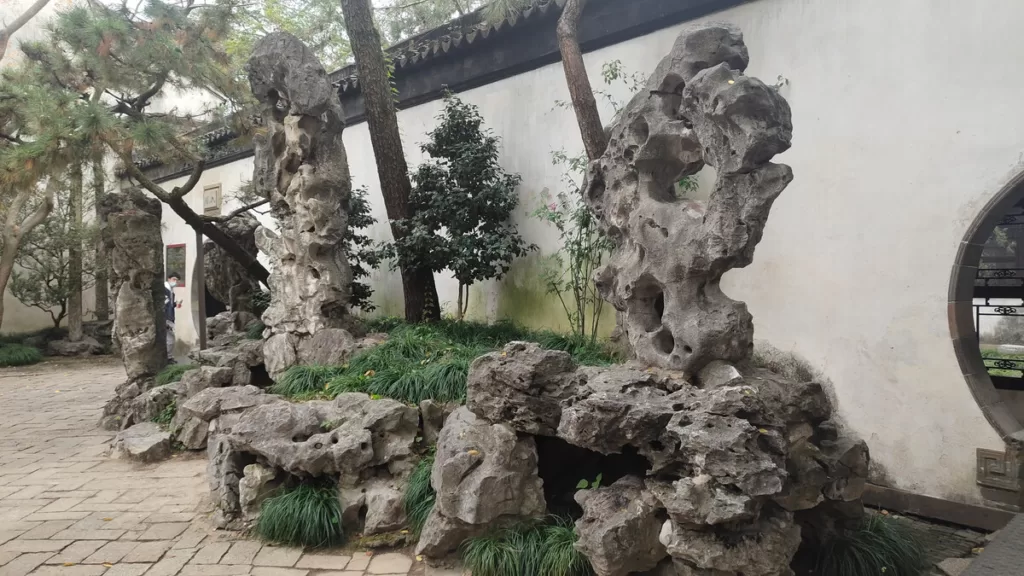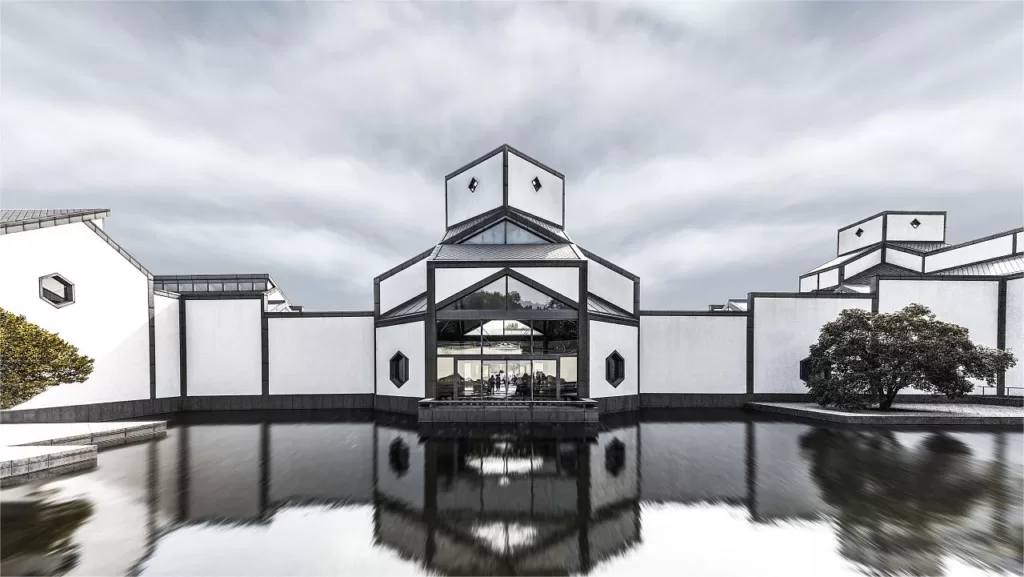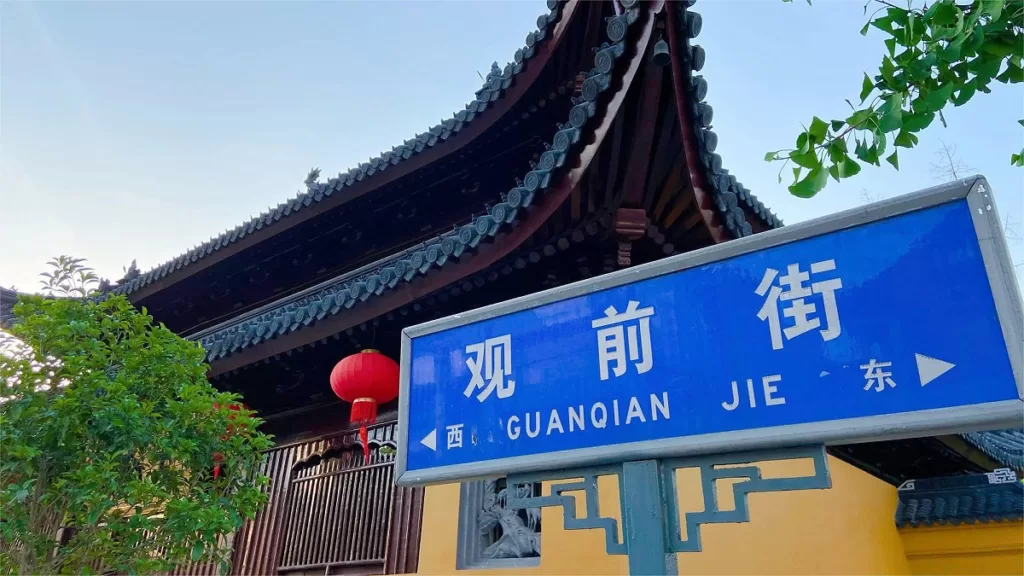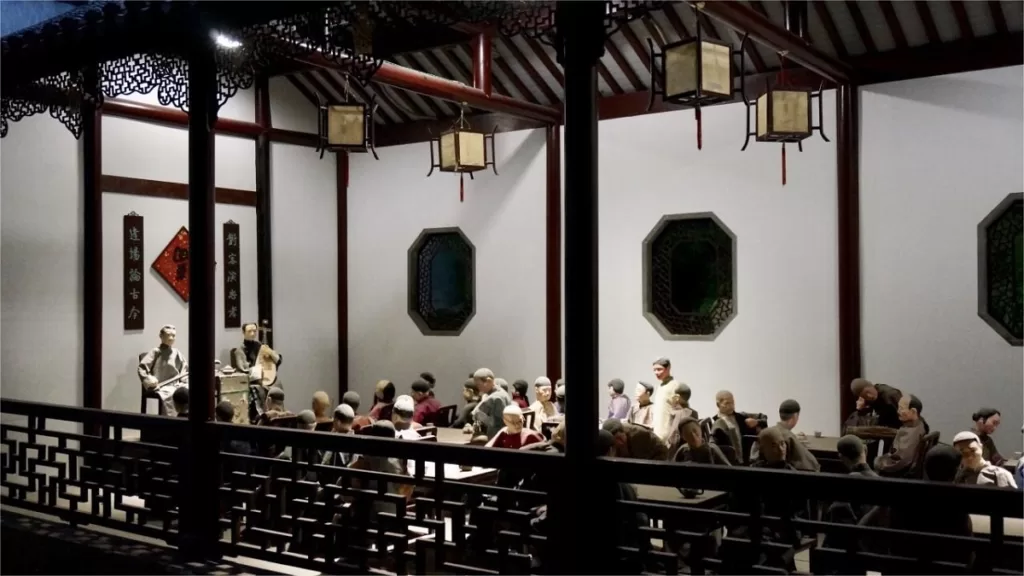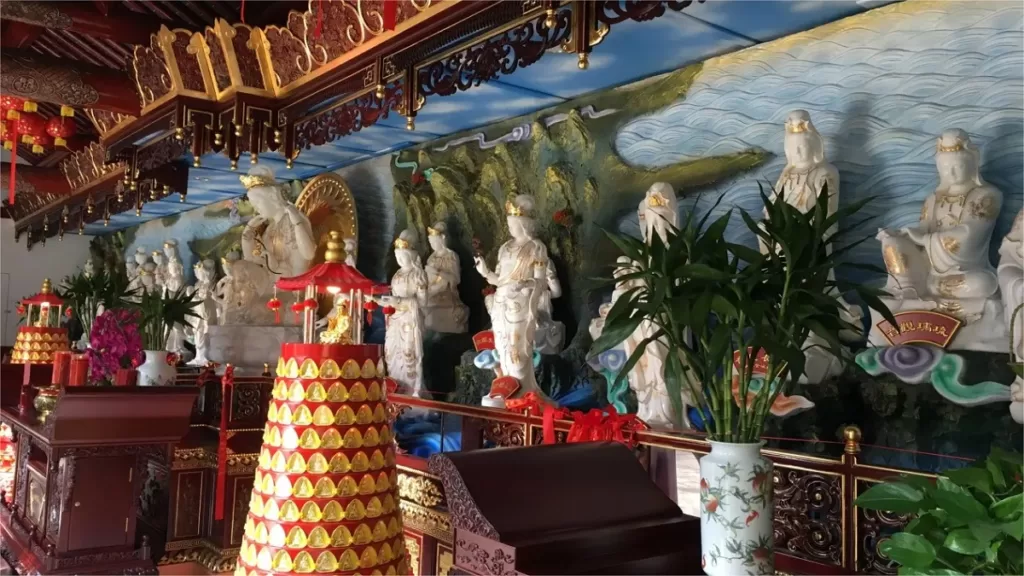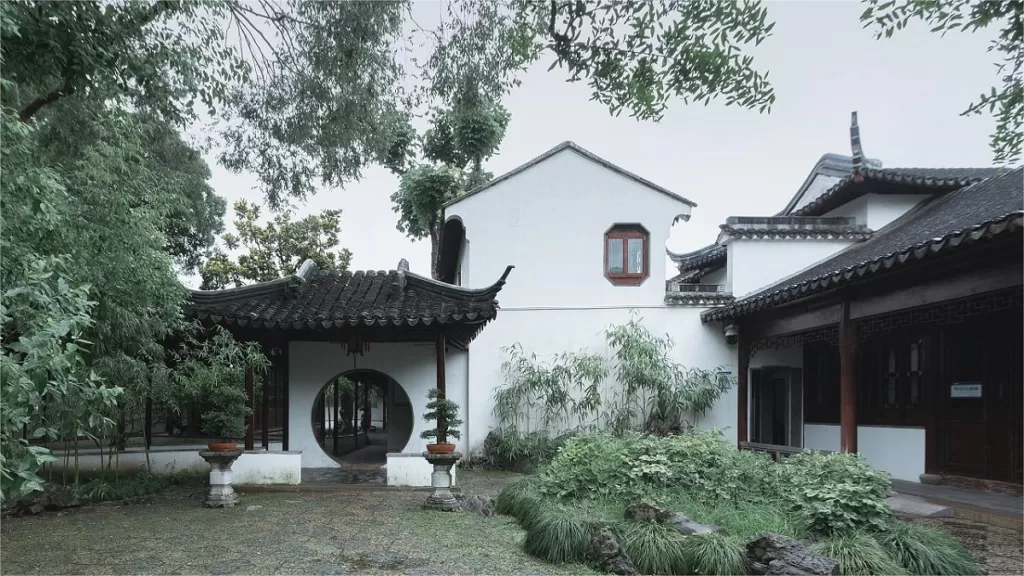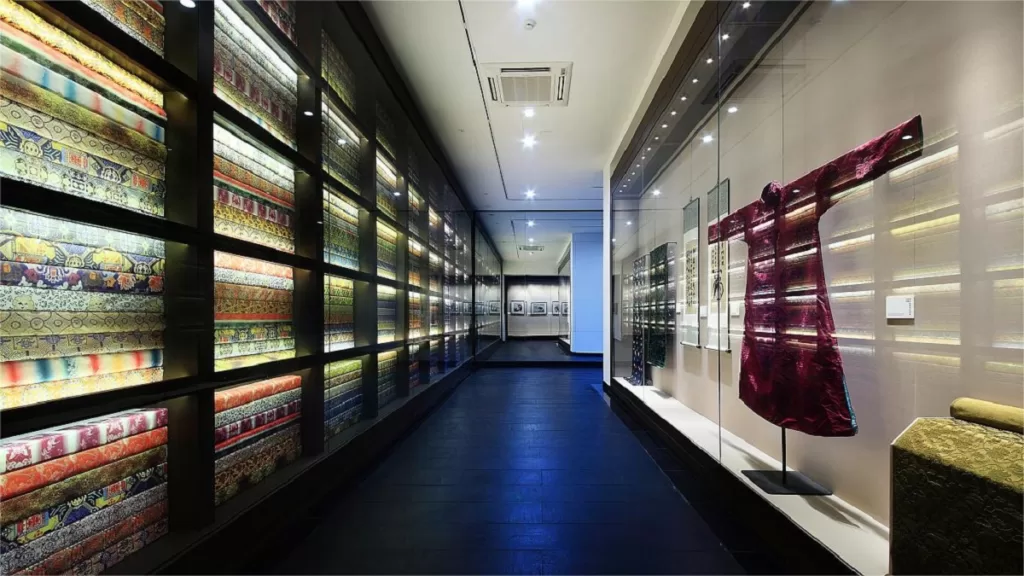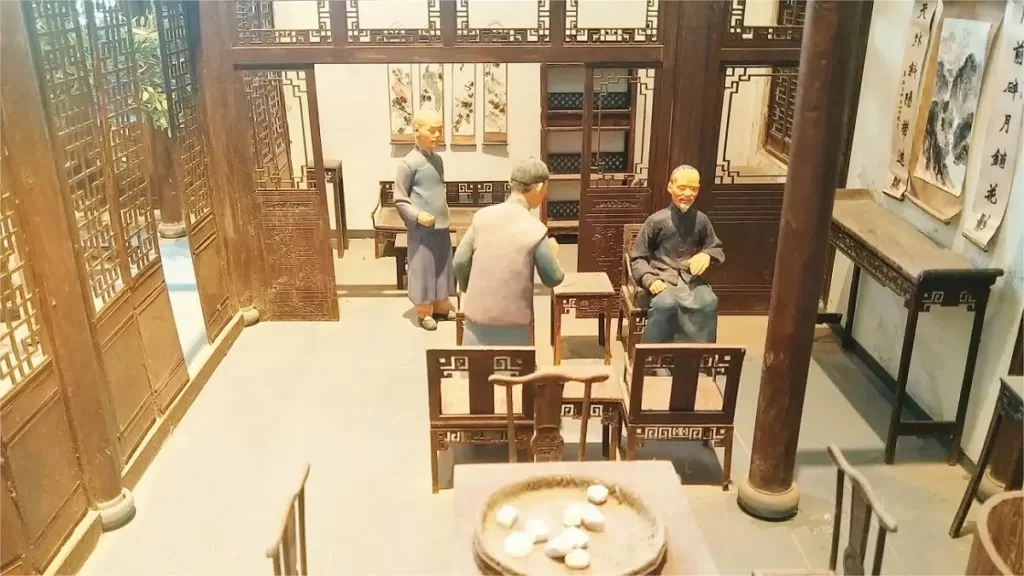The Humble Administrator’s Garden, also known as Zhuozheng Garden, is a renowned classical Chinese garden located in Suzhou. Its history dates back to the year 1513 when Wang Xianchen, an imperial censor who returned to his hometown after retiring, decided to construct a residential garden on the site of the Grand Hong Temple. Inspired by the poetic verses of Pan Yue from the Western Jin Dynasty’s “Idle Thoughts,” he aptly named his creation the Humble Administrator’s Garden (拙政园, Zhuōzhèng Yuán).
The garden is a masterpiece of classical Chinese garden design, known for its meticulous layout and integration of natural elements. It is centered around water features, with meandering paths, intricate rockeries, and delicately crafted courtyard buildings surrounded by lush vegetation. The combination of these elements creates a picturesque landscape, making it a quintessential representation of Jiangnan-style gardens.
In recognition of its exceptional cultural and historical significance, the Humble Administrator’s Garden, along with the Summer Palace in Beijing, the Chengde Mountain Resort, and the Lingering Garden in Suzhou, is collectively known as one of the “Four Great Classical Gardens of China.” Furthermore, it has earned a place on the prestigious UNESCO World Heritage List.
Table of Contents
- Basic Information
- Location and Transportation
- Highlights of Humble Administrator’s Garden
- Vlog about Humble Administrator’s Garden
- Useful Tips Summarized from Reviews
- Facts about Humble Administrator’s Garden
- Attractions near Humble Administrator’s Garden
Basic Information
| Website | www.szzzy.cn |
| Estimated Length of Tour | 2 – 3 hours |
| Ticket Price | 90 RMB (1st March – 15th November) 70 RMB (16th November – 28th February) |
| Opening Hours | 7.30 – 17.30 (1st March – 15th November) 7.30 – 17.00 (16th November – 28th February) |
| Telephone Number | 0086-0512-962015 |
Location and Transportation
The Humble Administrator’s Garden, a renowned classical Chinese garden, is located in the city of Suzhou, which lies in the Jiangsu province of Eastern China. Suzhou is renowned for its stunning gardens, earning it the nickname “the city of gardens.”
Specifically, the Humble Administrator’s Garden can be found in the northeastern part of Suzhou’s historic old town, near the picturesque Baijia Alley and Dongbei Street. Its central location within the city makes it easily accessible to both locals and tourists alike. To get there, you can choose the following way:
Bus: Take bus 5, 9009, 9016, 9025, or 9029, get off at Suzhou Museum Stop (苏州博物馆站), and walk about 200 meters to the northeast to reach the garden.
Metro: The nearest metro station to the Humble Administrator’s Garden is North Temple Pagoda (Beisita 北寺塔) on line 4. After getting out of the station from Exit 4, walk about 800 meters to the east to reach the garden.
Highlights of Humble Administrator’s Garden
Marvelous Design

The entire Hunmble Administrators’ Garden is a testament to the ingenuity of its design, offering a captivating experience for visitors as they progress through its various sections. Every step reveals a new scene, showcasing the charm of the water towns in southern China. The pathways wind through a series of distinctive structures, including pavilions with openwork patterns on stone walls, each pavilion and window uniquely designed and complemented by the surrounding flora, creating picturesque vistas reminiscent of classical Chinese paintings.
The layout of the garden is harmonious and naturally arranged, with water as the focal point. The wide expanse of water surfaces and the serene and natural scenery create a tranquil atmosphere. The garden’s depiction of lakes, ponds, and streams in different areas combines the poetic and artistic themes of traditional Chinese landscapes with the actual environment, resulting in a rich and picturesque setting.
Central Garden – The Centerpiece

The main area of the Central Garden in Humble Administrator’s Garden features a water pool as its centerpiece, surrounded by pavilions and terraces that extend directly over the water. The “Distant Fragrance Hall,” symbolizing human character through the metaphor of the lotus fragrance, is the central building of this area. Situated on the south bank of the pool, it overlooks the islands to the east and west. The clear and expansive water is filled with lotus flowers, and the islands are densely covered with trees, creating a beautiful scene. Connecting the islands are small bridges spanning the streams between the hills, with a pavilion on each island – the “Snow Fragrance Clouds and Mist Pavilion” to the west and the “Awaiting Frost Pavilion” to the east, providing different scenic views throughout the seasons. To the west of Distant Fragrance Hall is the “Leaning Jade Pavilion,” and to its west is the boat-shaped “Fragrant Isle,” which stands in contrast. Together with the “Lotus Breeze Four-sided Pavilion” to the north, these structures form a harmonious composition, allowing visitors to enjoy the lotus flowers with ease.
West Garden – The Supplementary Garden

The West Garden in Humble Administrator’s Garden, originally known as the “Supplementary Garden,” covers an area of approximately 12.5 acres. Its layout is compact, with winding water surfaces and pavilions and terraces built along the hillsides. After extensive renovations, the artistic style that emerged during the Qing Dynasty, characterized by elaborate craftsmanship, became dominant. The main building in the West Garden is the “Thirty-Six Mandarin Ducks Hall,” situated close to the residential area. It served as a venue for entertaining guests and listening to music, with its interior furnishings reflecting exquisite taste. On sunny days, the blue glass windows create an illusion of a snowy landscape when viewing the outdoor scenery. Another significant structure in the West Garden is the “Who Sits Together Pavilion,” a fan-shaped pavilion with two semi-circular windows on either side, one facing the “Reflection Tower” and the other facing the “Thirty-Six Mandarin Ducks Hall.”
East Garden – Returning to the Countryside Residence

The East Garden, originally named “Returning to the Countryside Residence,” acquired its name in 1631 when Wang Xinyi, a minister, returned to live in the garden. Covering approximately 31 acres, this section was entirely rebuilt, emphasizing flat hills, distant mountains, pine groves, grassy lawns, bamboo groves, and winding waterways. The layout, featuring mountains, ponds, pavilions, and terraces, maintains an open and lively style. Major buildings in this area include the “Orchid Snow Hall,” “Hibiscus Pavilion,” “Heavenly Spring Pavilion,” and “Adorning Cloud Peak,” among others, all of which were relocated.
Architectural Evolution
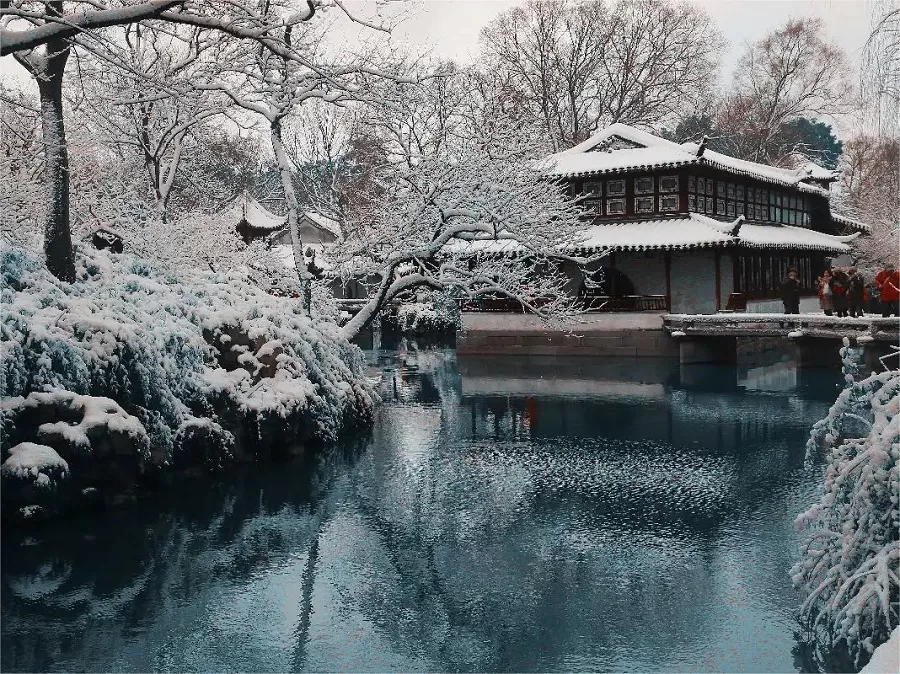
The Humble Administrator’s Garden underwent significant changes in its architectural evolution. Initially featuring standalone structures, a notable transformation occurred in the late Qing Dynasty. There was a marked increase in pavilions, halls, and galleries, reflecting a shift towards grouped compositions. The spatial layout of courtyards became more intricate and varied. For instance, the area known as Little Canglang started as a simple waterside pavilion but evolved into a complex of water courtyards, featuring unique structures like Little Rainbow Bridge, Real Achievement Pavilion, and Clear Intentions and Distant Meanings Pavilion. This transition addressed the transition between residential and garden spaces, enhancing the overall openness of the landscape.
Literary and Artistic Connection
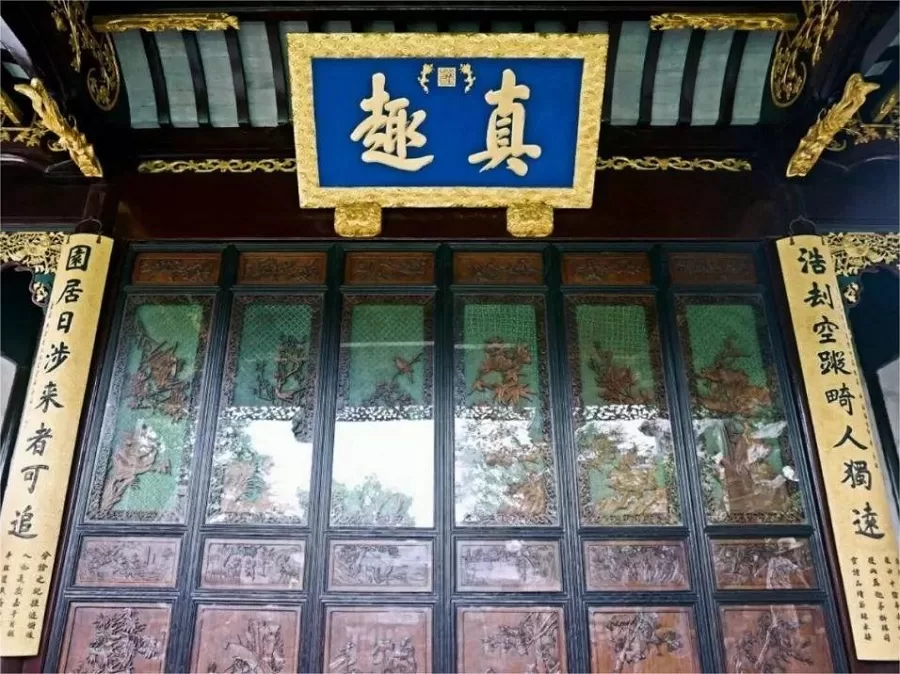
One remarkable aspect of the Humble Administrator’s Garden is the presence of numerous plaques, couplets, and inscriptions. The garden boasts 45 plaques, 22 couplets, and 18 brick inscriptions. These inscriptions, composed by renowned scholars of their time, are not only elegantly written but also carry historical and artistic value. They complement the architectural beauty of the garden, adding a poetic touch and providing valuable material for studying the historical evolution of garden layouts and the development of garden art.
Vlog about Humble Administrator’s Garden
Useful Tips Summarized from Reviews
Food and Drinks: There are limited food and drink options within the garden, so it’s advisable to bring your own snacks and drinks. Having some refreshments can be convenient, especially if you get tired during your visit.
Photography Recommendations: Capture beautiful moments at specific locations:
- The flower window behind the lotus pond, with a stunning view of the North Temple Pagoda.
- Far Fragrance Hall, especially during summer when the lotus flowers in the pond are in full bloom.
- Thirty-Six Mandarin Duck Hall with its blue and purple glass windows.
- Reflection Tower, offering a unique perspective resembling the sky.
Dining Options: For meals, consider heading to the nearby Pingjiang Road, where you can find various dining options to satisfy your hunger.
Luggage Storage: There are luggage storage facilities available, making it convenient for visitors to explore without the burden of carrying their belongings.
Summer Mosquito Protection: Due to the abundance of plants, it’s advisable to bring mosquito repellent during the summer months to ensure a more comfortable visit.
Timing to Avoid Crowds: Even on regular days, the Humble Administrator’s Garden tends to attract a large number of visitors. To avoid crowds and fully appreciate the scenery, consider visiting around 5:00 PM or early in the morning at 8:00 AM.

